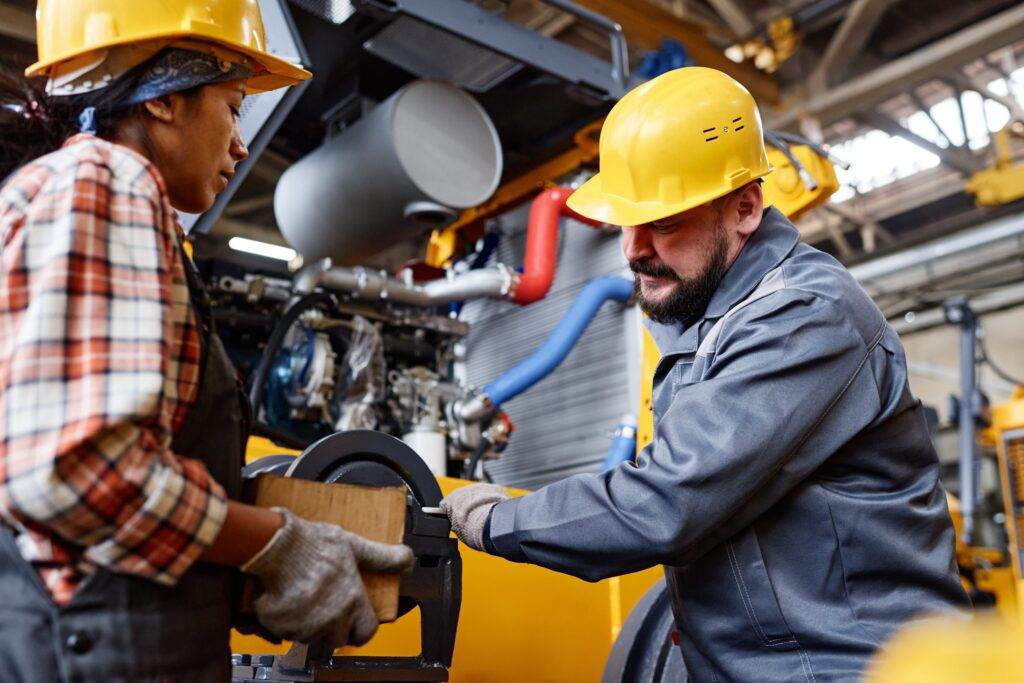Introduction
A comprehensive machine guarding program is crucial for ensuring workplace safety and minimizing the risks associated with machinery and equipment. This program encompasses the design, implementation, and regular evaluation of machine guarding measures. This article discusses the essential elements of a machine guarding program, emphasizing the importance of a systematic approach to protect employees from potential hazards.
Designing a Machine Guarding Program
The design phase of a machine guarding program lays the foundation for an effective safety framework. Key elements of the design phase include:
- Risk Assessment: Conduct a thorough risk assessment to identify potential hazards associated with each machine or equipment. Evaluate the severity and likelihood of injuries, considering factors such as moving parts, pinch points, electrical hazards, and potential contact with hazardous substances.
- Regulatory Compliance: Familiarize yourself with applicable regulations, standards, and guidelines related to machine guarding. Ensure that your program aligns with legal requirements and industry best practices to maintain a safe working environment and avoid penalties or legal consequences.
- Guard Selection and Design: Select the appropriate type of guards based on the identified hazards. This may include barrier guards, fixed guards, interlocking guards, presence-sensing devices, or two-hand controls. Consider the specific machine and its operation when designing guards, ensuring they effectively prevent access to hazardous areas.
- Integration of Engineering Controls: Explore engineering controls, such as automated systems, interlocks, or physical barriers, to enhance machine safety. These controls should be integrated into the design of the machines and equipment to minimize risks and eliminate or reduce potential hazards.
Implementing a Machine Guarding Program
Implementing a machine guarding program involves translating the design phase into actionable steps. Key elements of the implementation phase include:
- Installation and Integration: Ensure that guards are installed properly and securely according to the design specifications. Collaborate with relevant stakeholders, such as equipment manufacturers, maintenance personnel, and employees, to ensure effective integration of guards with the machinery and equipment.
- Employee Training and Awareness: Provide comprehensive training to employees on the importance of machine guarding, safe work practices, and the proper use and maintenance of guards. Promote awareness of potential hazards, safe operating procedures, and the significance of reporting any guarding deficiencies or concerns.
- Clear Communication: Establish clear communication channels to facilitate the reporting of guarding issues, near misses, or potential hazards. Encourage an open and transparent culture where employees feel comfortable raising concerns or suggesting improvements related to machine guarding.
- Regular Inspections and Maintenance: Conduct routine inspections to ensure that guards remain in good condition and are effectively protecting employees. Establish a maintenance schedule to address any wear, damage, or malfunction of guards promptly. Regularly document inspection findings and maintenance activities.
Regular Evaluation of a Machine Guarding Program
Regular evaluation is critical to measure the effectiveness of a machine guarding program and identify areas for improvement. Key elements of the evaluation phase include:
- Audits and Assessments: Conduct periodic audits and assessments to evaluate the overall effectiveness of the machine guarding program. This involves reviewing guarding measures, documentation, employee adherence to procedures, and compliance with regulatory requirements.
- Employee Feedback and Engagement: Seek feedback from employees regarding their experience with machine guarding measures. Encourage their active participation in identifying potential improvements and addressing any challenges they encounter. Engaged employees can provide valuable insights to enhance the program’s effectiveness.
- Data Analysis: Analyze incident reports, near-miss reports, and injury data to identify trends or recurring issues related to machine guarding. Use this data to inform decision-making, prioritize improvements, and implement corrective actions.
- Continuous Improvement: Continuously strive for improvement by incorporating lessons learned from incidents, feedback, audits, and data analysis. Update guarding measures as needed, considering technological advancements, best practices, and regulatory changes. Regularly communicate changes and improvements to employees.
Conclusion
A well-designed, implemented, and regularly evaluated machine guarding program is essential for ensuring workplace safety. By incorporating key elements such as risk assessment, regulatory compliance, guard design and selection, installation, employee training, regular inspections, and program evaluation, organizations can establish a comprehensive framework to minimize risks associated with machinery and equipment. Continuous improvement and employee engagement are critical to maintaining an effective machine-guarding program that protects employees from potential hazards and fosters a culture of safety.








